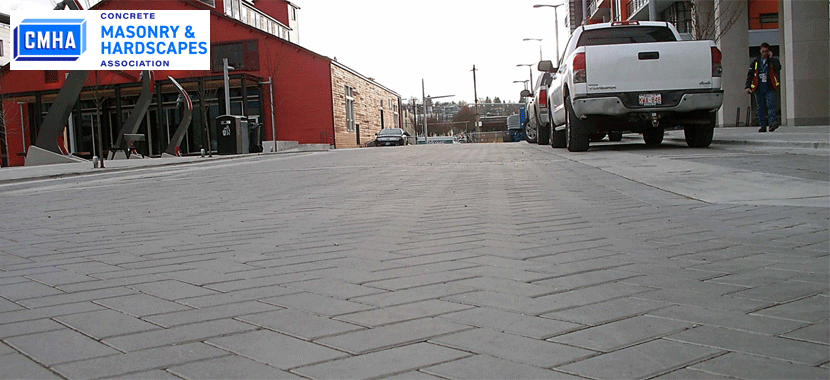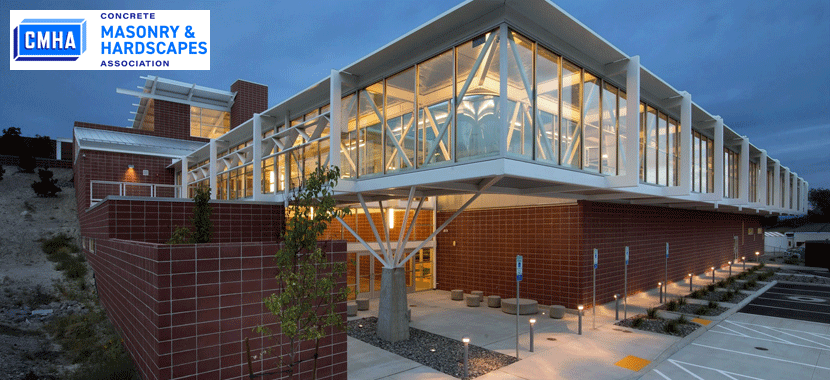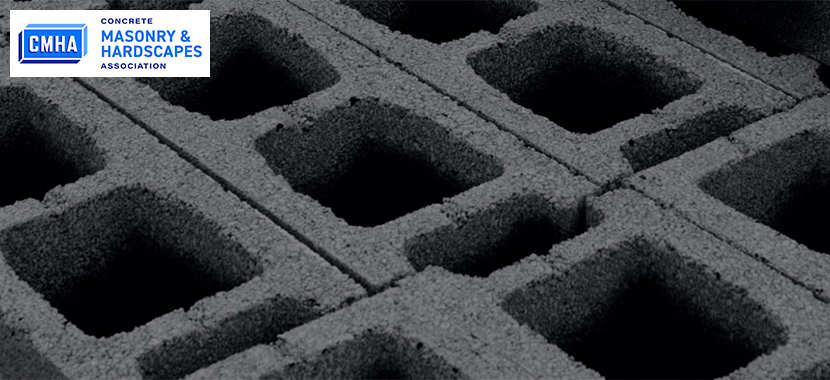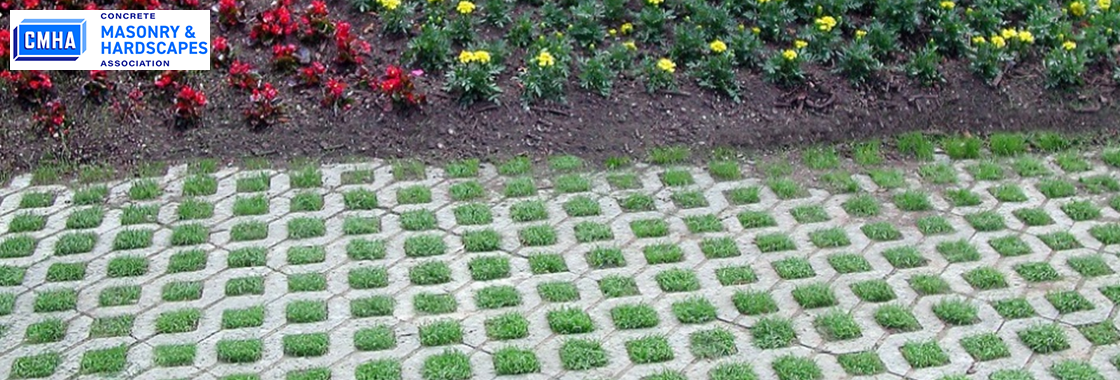https://masonryandhardscapes.org
13750 Sunrise Valley Drive
Herndon
VA 20171
USA
Phone: 703-713-1900







Displaying 7 course(s).
Scan this code with your mobile device camera to take this page on-the-go!

https://redirect.aecdaily.com/s7816/www.aecdaily.com/course/802273
 Interlocking concrete pavers (ICP) have the ability to spread applied loads via the interlock between each unit. This means that the surface does not respond structurally as single pavers but as a composite paved surface. This structural characteristic of ICP allows the design method for these pavements to be based on flexible pavement design. In this course, we examine the ASCE and ICPI structural design methods for ICP and review examples using different soil strengths/stiffnesses and traffic uses. Finally, we survey the design and construction support material and software available from the Interlocking Concrete Pavement Institute.
Interlocking concrete pavers (ICP) have the ability to spread applied loads via the interlock between each unit. This means that the surface does not respond structurally as single pavers but as a composite paved surface. This structural characteristic of ICP allows the design method for these pavements to be based on flexible pavement design. In this course, we examine the ASCE and ICPI structural design methods for ICP and review examples using different soil strengths/stiffnesses and traffic uses. Finally, we survey the design and construction support material and software available from the Interlocking Concrete Pavement Institute.
Scan this code with your mobile device camera to take this page on-the-go!

https://redirect.aecdaily.com/s7816/www.aecdaily.com/course/865795
 Stormwater management is a critical component in any municipality to retain and infiltrate increased runoff volumes and flow rates from developed land that creates increased impervious cover (roofs and pavements). The course discusses the hydrologic and structural design fundamentals of permeable interlocking concrete pavement (PICP) and why it is an excellent choice to help meet stormwater management goals. Discussions include the benefits of using PICP, components of PICP, design and construction considerations and how use of PICP can help earn LEED® credits.
Stormwater management is a critical component in any municipality to retain and infiltrate increased runoff volumes and flow rates from developed land that creates increased impervious cover (roofs and pavements). The course discusses the hydrologic and structural design fundamentals of permeable interlocking concrete pavement (PICP) and why it is an excellent choice to help meet stormwater management goals. Discussions include the benefits of using PICP, components of PICP, design and construction considerations and how use of PICP can help earn LEED® credits.
Scan this code with your mobile device camera to take this page on-the-go!

https://redirect.aecdaily.com/s7816/www.aecdaily.com/course/977173
 Increased energy efficiency in both new and existing construction continues to be a large factor behind the design decisions we make and the materials we choose to integrate into our buildings. Concrete masonry construction can provide a wide range of benefits. This course illustrates how building envelopes constructed with concrete masonry create high-performance buildings that can exceed energy code requirements.
Increased energy efficiency in both new and existing construction continues to be a large factor behind the design decisions we make and the materials we choose to integrate into our buildings. Concrete masonry construction can provide a wide range of benefits. This course illustrates how building envelopes constructed with concrete masonry create high-performance buildings that can exceed energy code requirements.
Scan this code with your mobile device camera to take this page on-the-go!

https://redirect.aecdaily.com/s7816/www.aecdaily.com/course/991693
 As impervious land cover increases, so does the need for stormwater management. Concrete grid pavements provide increased infiltration rates, positively affecting runoff flow while decreasing erosion. This course introduces the range of grid pavement and erosion control applications and provides design and construction guidelines. Environmental performance is defined via conclusions from several research projects. Concrete grid pavements require minimal maintenance when properly designed and installed in appropriate applications. This course also includes an overview of how concrete grid paving units can be used to meet a number of LEED® v4.1 BD+C credit requirements.
As impervious land cover increases, so does the need for stormwater management. Concrete grid pavements provide increased infiltration rates, positively affecting runoff flow while decreasing erosion. This course introduces the range of grid pavement and erosion control applications and provides design and construction guidelines. Environmental performance is defined via conclusions from several research projects. Concrete grid pavements require minimal maintenance when properly designed and installed in appropriate applications. This course also includes an overview of how concrete grid paving units can be used to meet a number of LEED® v4.1 BD+C credit requirements.
Scan this code with your mobile device camera to take this page on-the-go!

https://redirect.aecdaily.com/s7816/www.aecdaily.com/course/990200
 While all pavements require maintenance and eventually rehabilitation, the modular nature of interlocking concrete pavement (ICP) requires maintenance procedures distinctly different from those for monolithic pavements. This course provides information on surface cleaning, sealers, sealing procedures, and joint sand stabilization. Repair procedures for the subgrade, base, bedding, and paver layers are also provided. Snow management techniques are addressed, and the course concludes with an in-depth look at pavement management using ASTM procedures for establishing a pavement condition index.
While all pavements require maintenance and eventually rehabilitation, the modular nature of interlocking concrete pavement (ICP) requires maintenance procedures distinctly different from those for monolithic pavements. This course provides information on surface cleaning, sealers, sealing procedures, and joint sand stabilization. Repair procedures for the subgrade, base, bedding, and paver layers are also provided. Snow management techniques are addressed, and the course concludes with an in-depth look at pavement management using ASTM procedures for establishing a pavement condition index.
Scan this code with your mobile device camera to take this page on-the-go!

https://redirect.aecdaily.com/s7816/www.aecdaily.com/course/1009125
 The inherent properties of concrete masonry, including strength, durability, and fire safety, have been well documented, though a perception of high cost persists. Due to significant changes to codes and standards that increased the flexibility of concrete masonry structural design, this construction method may also offer cost-effective and energy-efficient alternative solutions. This course reviews changes to ASTM C90 and the masonry design standard and includes a discussion on the benefits and opportunities these requirements bring.
The inherent properties of concrete masonry, including strength, durability, and fire safety, have been well documented, though a perception of high cost persists. Due to significant changes to codes and standards that increased the flexibility of concrete masonry structural design, this construction method may also offer cost-effective and energy-efficient alternative solutions. This course reviews changes to ASTM C90 and the masonry design standard and includes a discussion on the benefits and opportunities these requirements bring.
Scan this code with your mobile device camera to take this page on-the-go!

https://redirect.aecdaily.com/s7816/www.aecdaily.com/course/1073772
 With the global rise in natural disasters and the increasing need for sustainable environments, resiliency has become a necessity in the design and building industries. This course provides an overview of resilient design, how it relates to building codes and standards, and the role it plays in ensuring the safety and sustainability of the built environment. It examines the role masonry construction plays in meeting resilient design goals and the inherent properties of masonry that make it resilient and provides examples and case studies of resilient design strategies.
With the global rise in natural disasters and the increasing need for sustainable environments, resiliency has become a necessity in the design and building industries. This course provides an overview of resilient design, how it relates to building codes and standards, and the role it plays in ensuring the safety and sustainability of the built environment. It examines the role masonry construction plays in meeting resilient design goals and the inherent properties of masonry that make it resilient and provides examples and case studies of resilient design strategies.
Displaying 7 course(s).